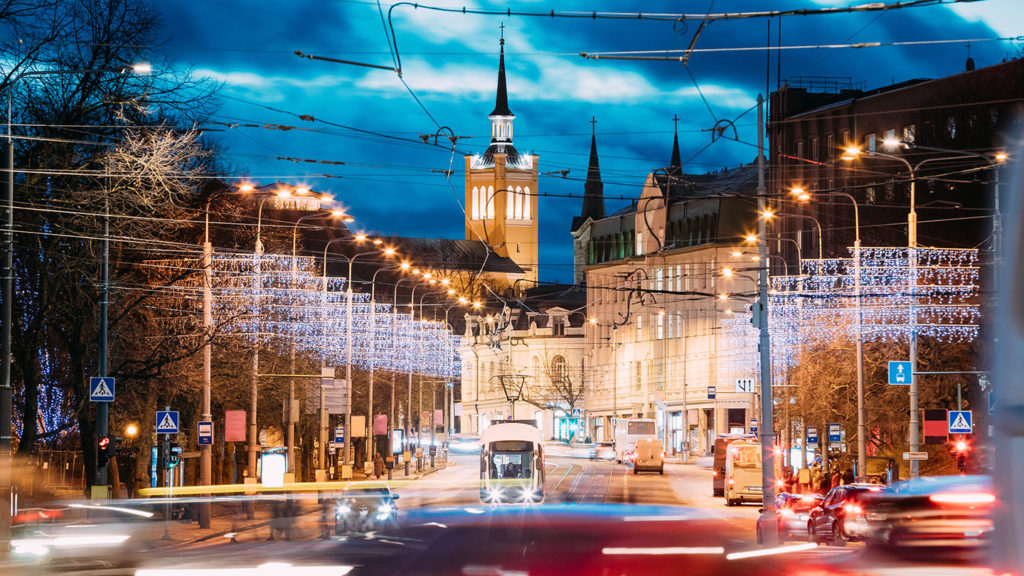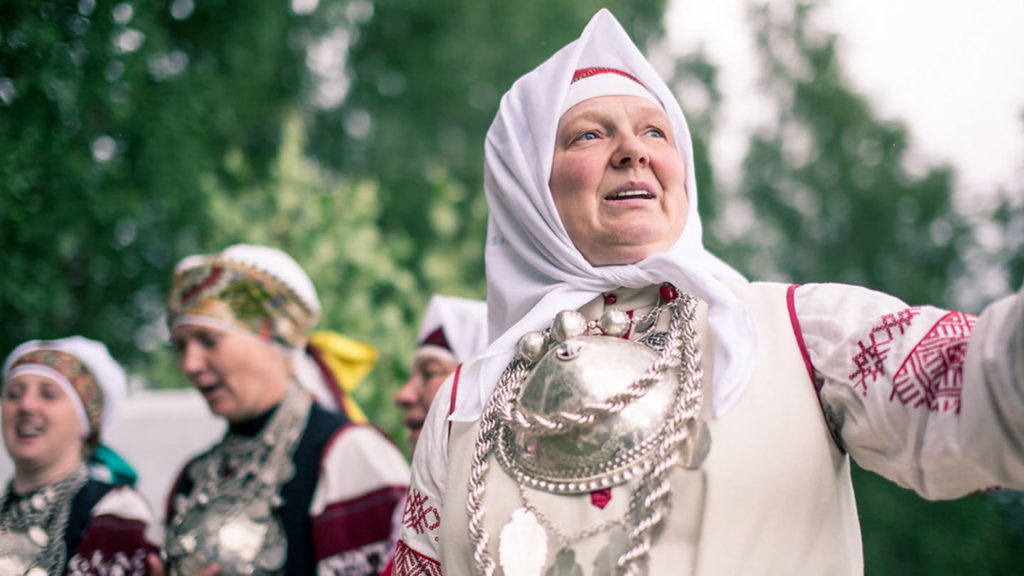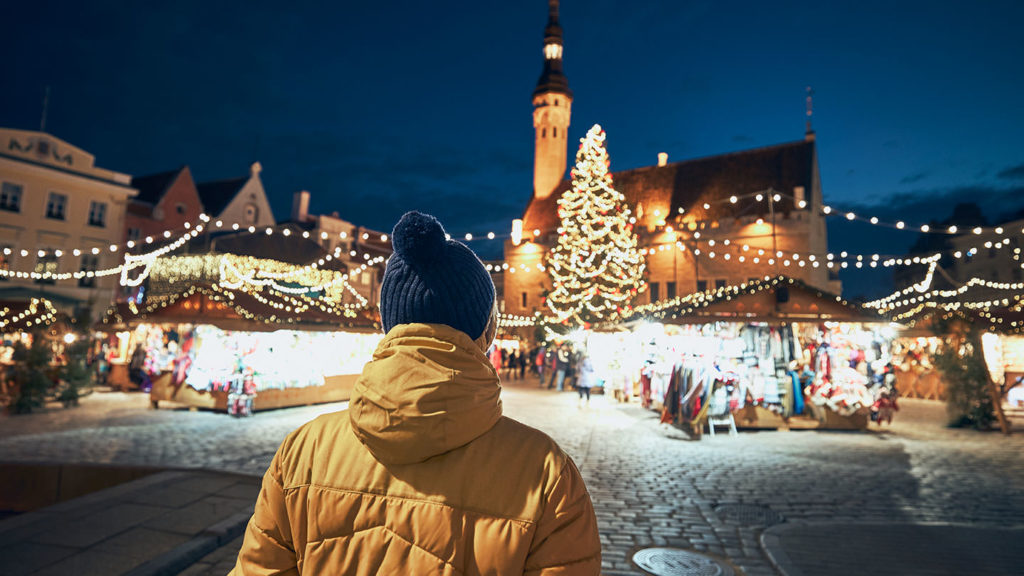Recently updated on June 12th, 2020 at 06:34 pm
What’s the most bizarre sport you could ever imagine? Here’s a hint – it involves heavy lifting. Learn all about it, as well as several other interesting facts about Estonia.
1. The country has over 2000 islands


The thought of thousands of islands may conjure up images of the Seychelles, Maldives or similar palm-fringed archipelagos surrounded by sparkling ocean. In the case of Estonia, which may be anything but tropical, there are hundreds of islands too – over 2000. But don’t expect to see a familiar face on most of these. In fact, they’re almost entirely untouched by the advances of civilisation. Here, travellers can catch a glimpse of a more traditional way of life. If you’re in need of a place where nobody knows your name, you should head to our favourites: Hiiumaa, Kihnu and Saaremaa.
GET INSPIRED BY: Best of Finland, Russia and the Baltic States
2. Ample, uncrowded green spaces


As one of the least densely populated countries in Europe, Estonia is a boon for nature lovers. Forest covers nearly 50% of the country, making Estonia one of Europe’s greenest countries.
3. Wife-carrying is a sport
Only heavyweights need to apply for this one. While this peculiar Estonian pastime may not have made it to the Olympics, we give it a gold medal for pure entertainment value. What’s more, the rules are fairly simple.
As the name suggests, husbands pick up their wives and race several hundred metres with their better (and clearly wiser) halves upside down on their backs, with her legs over his neck and shoulders. The track must have two dry obstacles and a one-metre deep water obstacle. And, here’s the kicker – the ‘wife’ carried must indeed be your own, or a neighbour’s, and at least 17 years old. Before you ask, yes this is a world championship.
4. Free public transport for locals
One of the most interesting facts about Tallinn is that its residents can use the capital city’s public transport network for free. Unfortunately, that privilege does not extend to visitors, but the extensive system is easy to use and offers great value for money if you’re up to getting around the local way.
5. Two UNESCO World Heritage sites


Another of our interesting facts about Estonia, which may have been as far off your radar as the little-known country itself, is that Tallinn’s Old Town is a UNESCO World Heritage site. No visit to Estonia is complete without some quality time spent admiring Tallinn’s Hanseatic heritage, which dates back to the 13th century. Its history clings to every inch of the city’s medieval façades.
Estonia’s second UNESCO site is shared with a few of its neighbours. As the first technical and scientific object in the world to earn World Heritage status, the Struve Geodetic Arc is a chain of survey triangulations to help accurately measure a meridian.
RELATED CONTENT: 9 of the best things to do in Tallinn, Estonia
6. Online voting
Estonia was the first country in the world to allow its citizens to vote online in 2005. The country is often touted as the most digitally advanced society in the world. The benefit to tourists? Travel throughout Estonia is incredibly slick.
With WiFi hotspots all over the country (even in those forests) and all government services available online, e-Estonia is leading the way. That means you can WhatsApp, Facebook and Instagram your way through the country with absolute ease.
7. The kroon
Before adopting the Euro in 2011, the Estonian currency was the kroon. But, even more interesting, is that the kroon was Estonia’s official currency over two periods in history: 1928–1940 and 1992–2011. Of course, the blip in between was due to the introduction of the Soviet ruble.
8. The locals aren’t religious
While only 16% of Estonians say religion is an essential aspect of their lives, the country is home to an astounding array of well-preserved religious sites. Most noteworthy of these is St Madeline’s Church in Ruhnu, the country’s oldest wooden building. We find this particular building fascinating because it was fashioned entirely out of the wood from shipwrecked boats.
Also worth adding to your Tallinn sightseeing is St Olaf’s Church. Besides being the world’s tallest building at the time of its construction up until the early 17th century, it has the rather unfortunate reputation of being a favourite lighting conductor. Lightning has struck the church no fewer than 10 times, causing extensive fires in 1625, 1820 and 1931.
9. Sing-song the Estonian way


Get in tune with Estonian culture and listen to the local Seto singing. Dating back to ancient times, this traditional chorus was used to express emotion and pass history and culture from generation to generation.
Our top tip to see this ancient polyphonic serenade first-hand is on the island of Setomaa. Here, traditional singers wear their finest as they revive this age-old singing tradition.
10. Clean air
Perhaps not surprising given the abundance of green spaces, but Estonia boasts some of the cleanest air in the world. The country ranks right up there for clear air indexes with other such sustainable countries as Finland and Iceland. Since you can’t bottle it, take a deep breath in and let all that good oxygen fill your lungs with Estonian goodness.
11. Flat, but tall
These two facts about Estonia are in stark contrast to each other. While Estonia is largely flat in terms of its landscape, its people are amongst the tallest in Europe. The country’s highest point, aptly named Egg Mountain, is only 318 metres (1,043 feet) above sea level. Meanwhile, the lanky Estonian locals clock in at 169 cm (women) and 180 cm men.
The Estonian women also have a reputation for being among the world’s most beautiful. The country’s appeal in the looks department is said to have something to do with the ratio of international supermodels per capita being higher than elsewhere in the world. Must have something to do with all that clean air.
12. Estonians are linguists
Great news for travellers is that most Estonians speak multiple languages. You may be relieved to know that Estonians count among their languages of proficiency: English, Russian, Finnish and German, in addition to their mother tongue.
So, even if English is the only language that you share with your hosts, take heart that most Estonians are at least bilingual, and are credited with being among the best English speakers in Europe.
13. Magical Christmas market


Legend has it that the first Christmas tree was planted in Tallinn’s town centre in 1441. This merry event signalled the first Christmas tree placed and decorated in a European town square.
Of course, neighbouring Riga contests this, claiming they had a Christmas tree brought in around the same time. Nevertheless, Tallinn at Christmas is a must, not-withstanding the fact that the same tree today is liberally sprinkled with decorative hearts. Love Tallinn? We think so!
The Market takes centre stage around the Town Hall from late November to early January. For locals and visitors, this means an extended opportunity to sip on steaming mulled wine and sample local Estonian Christmas fare.
We’d love to hear if we’ve missed any interesting facts about Estonia? Add your Tallinn facts and Estonia favourites in the comments below…